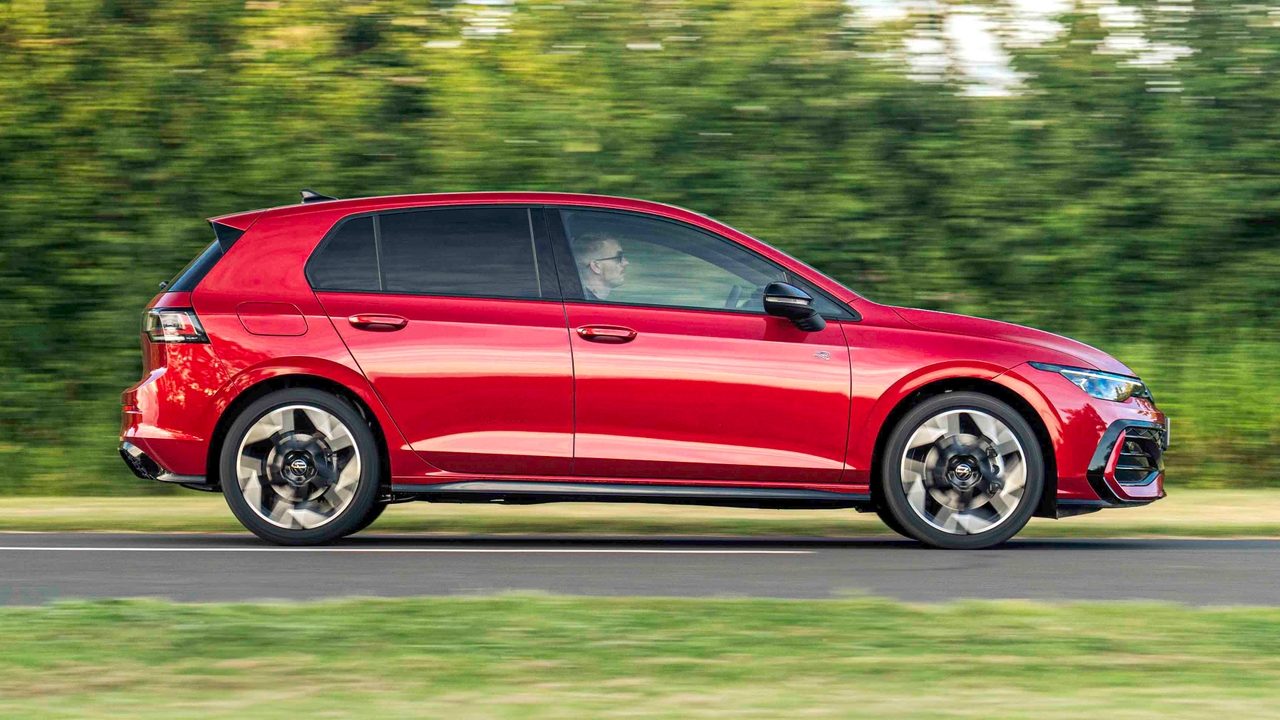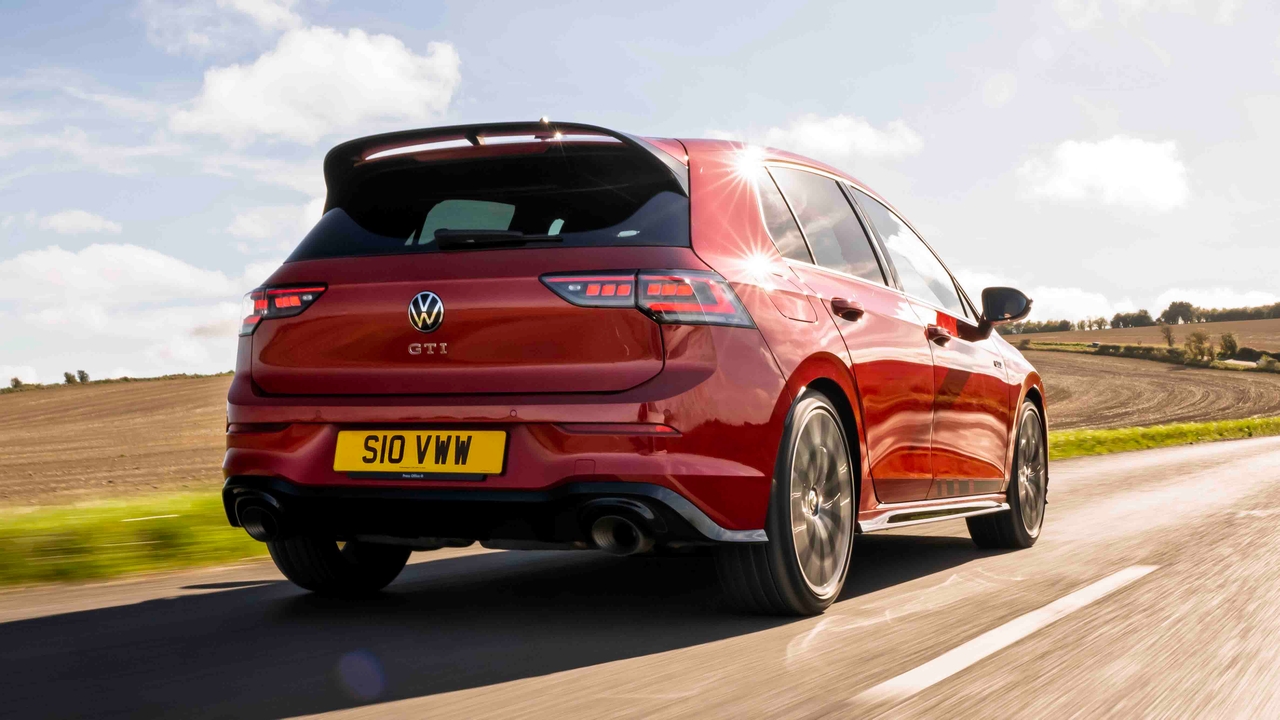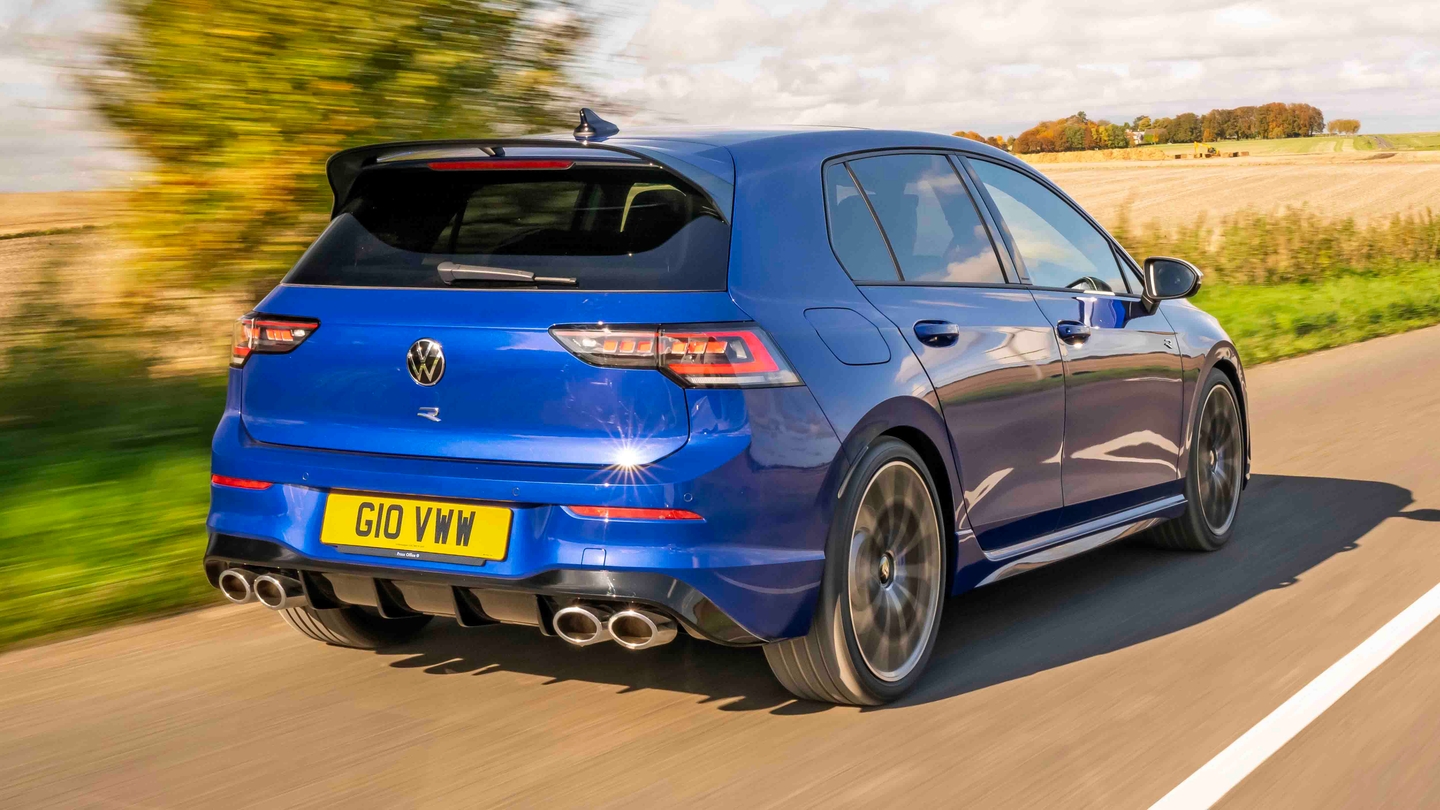
Volkswagen Golf engines, driving and performance
Gallery
How does the Volkswagen Golf drive?
The Golf is comfy and surprisingly fun – there’s simply nothing about the way the Golf drives that’ll annoy you. In town, you’ll be thankful for the light clutch and easy gearshift on the manual models, while the dual-clutch automatic gearbox fitted to most of the range is smooth-shifting and doesn’t hesitate when pulling away from a standstill.
It’s surprisingly enjoyable on twisty country roads, too, where it turns into corners eagerly and encourages you to drive perhaps a bit more sportily than you would in, say, a Peugeot 308. The only time you’d criticise the Golf’s handling is if you’d just stepped out of a Ford Focus, which is a little more fun to drive… but doesn’t offer quite the same overall package as the Volkswagen.
Is the Volkswagen Golf comfortable?
By and large, all Golf models iron out bumps really rather well. Life models with their 16-inch alloy wheels are comfiest, while the larger 17-inch wheels on R-Line cars do send a few more bumps into your backside.

From new, you can order the Golf with adaptive dampers, which unlocks a comfort mode that softens the ride even further. There are about 15 total firmness settings for the suspension if you get the DCC dampers, but they really do make a difference if you want to soften the Golf off (or make it unnecessarily firm…). DCC isn’t typically a cheap option, and nor is it chosen by every customer, so we’d recommend testing a Golf without it to see if you actually need the fancy suspension.
Comfort on the motorway is decent for a hatchback as well – you won’t be annoyed by wind and tyre noise at 70mph, and the seats in all models are comfy for long stints.
What’s the best Volkswagen Golf engine to get?
The 1.5-litre TSI Evo petrol engine gives you a decent mix of performance and fuel economy – so that’d be our pick. It achieves around 50mpg if driven calmly. The 1.0-litre petrol engine is also a good – and more affordable – option if you don’t mind trading a bit of performance over the 1.5.
If you prefer diesel, the 2.0-litre TDI diesel can return more than 60mpg when driven with care, making it a good pick if you do lots of motorway miles.
Some of the Golf’s engines are labelled as ‘eTSI’ – this doesn’t mean they’re sold on a popular crafts website, but rather that they include mild-hybrid technology. On the Golf, it’s fitted to some automatic gearbox versions.

This provides a small increase in fuel economy and a little extra shove from a standstill, thanks to a small electric motor and battery. The eTSI models can’t drive on electric power alone, but can shut down the engine when you’re off the accelerator. However, unless you’re really looking out for it it’s hard to know the mild-hybrid assistance is there at all – so we’d not pay much attention to this and just decide between a manual or automatic Golf.
The eHybrid Golf is auto-only, so you can relax and enjoy the excellent fuel economy. While you’ll get nowhere near VW’s outlandish 993mpg claim, the eHybrid is considerably more eco than other Golfs. We achieved over 100mpg on our test drive, and the roughly 80% battery charge gave over 50 miles of electric driving.
It’s up to the car’s computer to juggle the petrol engine and electric motor, and the transition between the two is pretty seamless. Not all PHEVs are so well resolved. There’s a slight inconsistency in the brake feel, but on the whole it’s a strong package. We were confused that there didn’t seem to be any obvious regen braking settings, as these would help to get closer to VW’s fuel economy figures.

GTI and R cars feature VW’s tried-and-tested 2.0-litre petrol engine – the EA888 engine if you’re a nerd. Both models are the most powerful in their respective histories, with new GTIs pumping out 265hp and the R boosting that to 333hp (245hp and 320hp in pre-facelift cars). If you can overlook some of the R’s spec quirks – haptic steering wheel buttons, manual seat adjustment and a manual bootlid – you’ll enjoy its blistering all-weather, cross-country performance. Add in grippy tyres and strong brakes, and you’ll put all your confidence in the R.
Volkswagen Golf Performance
Whichever Golf you pick, performance will be more than adequate for everyday driving in the UK. The entry-level 1.0-litre TSI petrol engine will get from 0-62mph in just over 10 seconds, while the 150hp version of the 1.5-litre TSI petrol engine will do the same sprint in 8.1 seconds.

Want the fastest accelerating Golf on the market? That’d be the R – 320hp and a clever four-wheel-drive system combine to get to 62mph from a standstill in 4.7 seconds using the built-in launch control.
There’s no doubting that the R is mega fast, but it’s not super exciting. It’d lose the Golf’s famous all-round ability if it was. If it is ‘super exciting’ you want, we’ll point you towards the Ford Focus ST or Honda Civic Type R.




























































